Field Trip Report: Symbiotic Relationships
We had a sunshine of a day for our trip down the Savage Mill Trail in Howard County. Our focus for the field trip was to look at symbiotic relationships with the American Beech tree. Before we got started down the trail though, it was all about birds! A Bald Eagle flew overhead and this stunning Red-shouldered Hawk was perched on a branch looking up the river. It wasn’t long before we heard a second one arrive, they were communicating with one another. Ken Clark let us know that he had the pair nesting along the trail this summer and documented the nest for the Maryland/DC Breeding Bird Atlas.
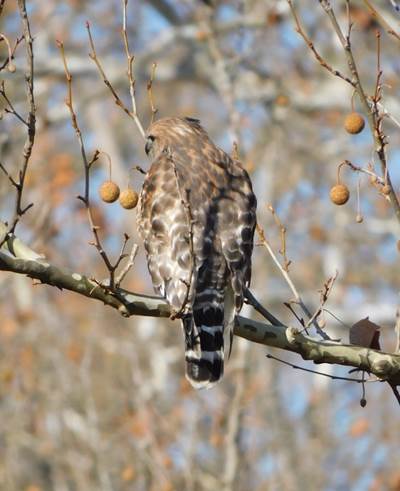
After we got done looking at the birds, we headed on down the trail! The trail goes primarily through mixed hardwood trees and a mix of native and non-native plants and vines in the understory. American Beech is a common tree along the trail. I had located Beech Blight Aphids (Grylloprociphilus imbricator) earlier in the week, so I knew exactly where to go. Once we arrived at the tree, the Beech Blight Aphids covered a branch, it almost looked snow-covered. Megan Bolcar was excited to add this species to her life list and MBP using iNaturalist.

Here is a closer look at the aphids:
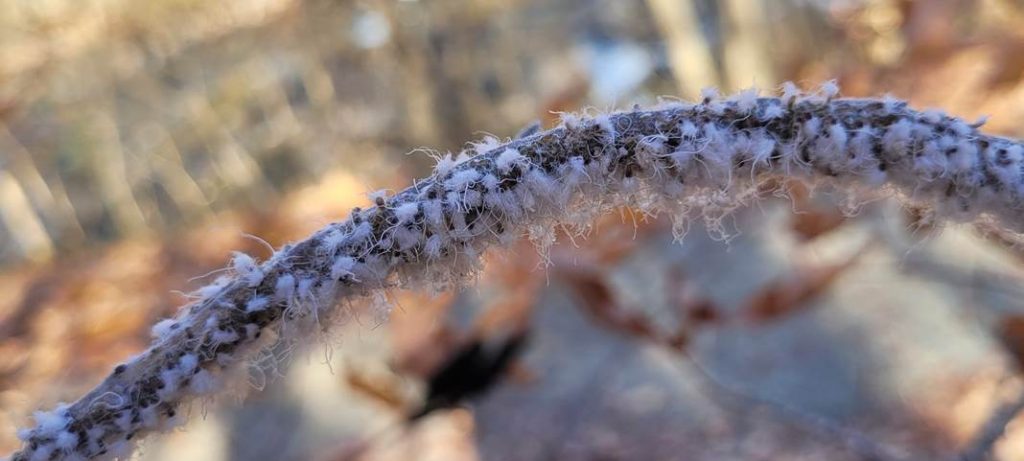
What is neat about this insect is that it secretes a sweet honeydew. Another species we observed on the tree that grows in concentrated areas of the honeydew, was the fungus Honeydew Eater (Scorias spongiosa). This is an example of a type of symbiotic relationship known as “commensalism”. In this type of relationship, one organism benefits while the other organism does not, although it is not harmed.
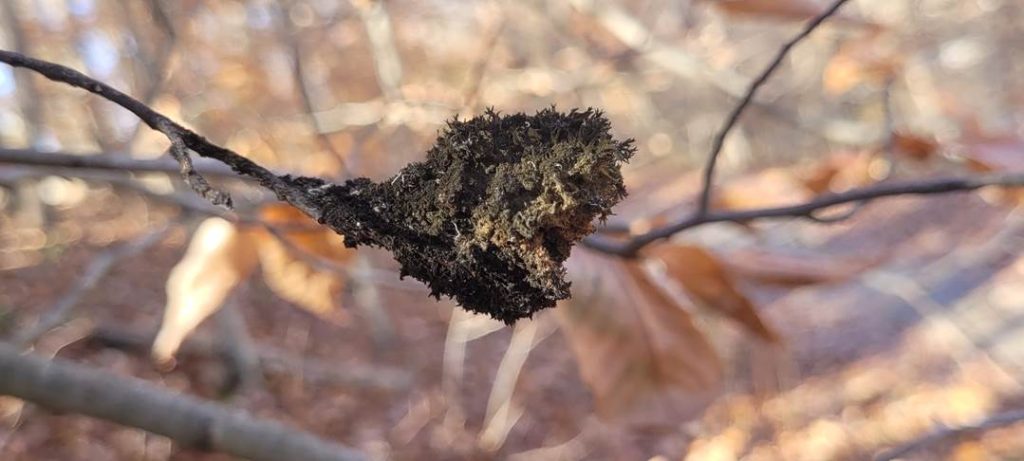
Another type of symbiotic relationship is “parasitism”. The plant Beechdrops (Epifagus virginiana) grows underneath American Beech. It is a plant with no chlorophyl, thus it can’t make food from photosynthesis. Instead, it gets nutrients by parasitizing the roots of the American Beech tree.
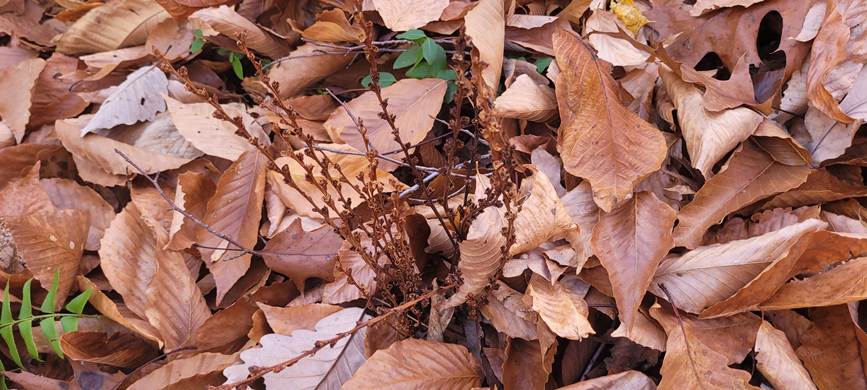
As we were walking back along the trail, I shared with everyone what I love most about the Savage Mill Trail. I can listen to the sound of the river and not hear air and auto traffic! This trail is a good place for viewing spring wildflowers too. Weekdays are best for walking this trail, it can get really busy on weekends. The last photo of the field trip was this handsome 8-point buck!
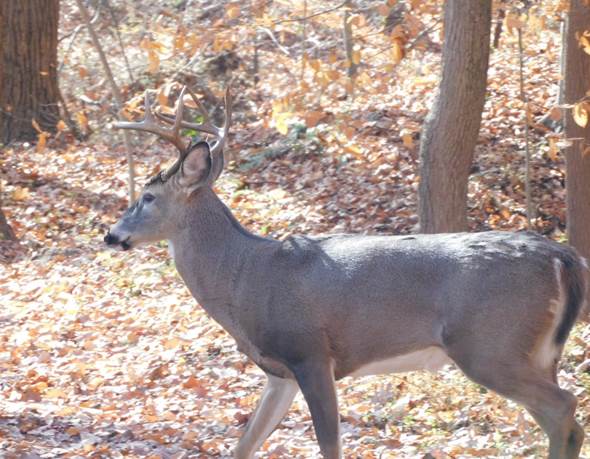
Thanks for reading!
Sue Muller


